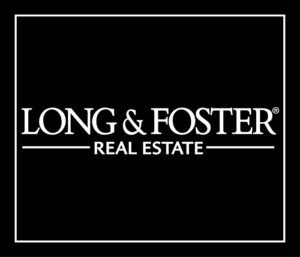By: G. M. Filisko
Published: January 30, 2014
Don’t rouse the IRS or pay more taxes than necessary — know the score on each home tax deduction and credit.
Sin #1: Deducting the wrong year for property taxes
You take a tax deduction for property taxes in the year you (or the holder of your escrow account) actually paid them. Some taxing authorities work a year behind — that is, you’re not billed for 2013 property taxes until 2014. But that’s irrelevant to the feds.
Enter on your federal forms whatever amount you actually paid in 2013, no matter what the date is on your tax bill. Dave Hampton, CPA, tax manager at the Cincinnati accounting firm of Burke & Schindler, has seen home owners confuse payments for different years and claim the incorrect amount.
Sin #2: Confusing escrow amount for actual taxes paid
If your lender escrows funds to pay your property taxes, don’t just deduct the amount escrowed, says Bob Meighan, CPA and vice president at TurboTax in San Diego. The regular amount you pay into your escrow account each month to cover property taxes is probably a little more or a little less than your property tax bill. Your lender will adjust the amount every year or so to realign the two.
For example, your tax bill might be $1,200, but your lender may have collected $1,100 or $1,300 in escrow over the year. Deduct only $1,200. Your lender will send you an official statement listing the actual taxes paid. Use that. Don’t just add up 12 months of escrow property tax payments.
Sin #3: Deducting points paid to refinance
Deduct points you paid your lender to secure your mortgage in full for the year you bought your home. However, when you refinance, says Meighan, you must deduct points over the life of your new loan. If you paid $2,000 in points to refinance into a 15-year mortgage, your tax deduction is $133 per year.
Sin #4: Misjudging the home office tax deduction
The deduction is complicated, often doesn’t amount to much of a deduction, has to be recaptured if you turn a profit when you sell your home, and can pique the IRS’s interest in your return. But there’s good news – there’s a new simplified home office deduction option if you don’t want to claim actual costs. If you’re eligible, you can instead claim $5 per sq. ft. up to 300 feet, or $1,500.
Sin #5: Failing to repay the first-time home buyer tax credit
If you used the original home buyer tax credit in 2008, you must repay 1/15th of the credit over 15 years. If you used the tax credit in 2009 or 2010 and then sold your house or stopped using it as your primary residence, within 36 months of the purchase date, you also have to pay back the credit.
The IRS has a tool you can use to help figure out what you owe.
Sin #6: Failing to track home-related expenses
If the IRS comes a-knockin’, don’t be scrambling to compile your records. Many people forget to track home office and home improvement expenses, says Meighan. File away documents as you go. For example, save each manufacturer’s certification statement for energy tax credits and lender or government statements to confirm property taxes paid.
Sin #7: Forgetting to keep track of capital gains
If you sold your main home last year, don’t forget to pay capital gains taxes on any profit. You can exclude $250,000 (or $500,000 if you’re a married couple) of any profits from taxes. So if your cost basis for your home is $100,000 (what you paid for it plus any improvements) and you sold it for $400,000, your capital gains are $300,000. If you’re single, you owe taxes on $50,000 of gains. However, there are minimum time limits for holding property to take advantage of the exclusions, and other details. Consult IRS Publication 523.
Sin #8: Filing incorrectly for energy tax credits
If you made any eligible improvements in 2013, such as installing energy-efficient windows and doors, you may be able to take a 10% tax credit (up to $500; with some systems your cap is even lower than $500). But keep in mind, it’s a lifetime credit. If you claimed the credit in any recent years, you’re done. Fill out Form 5695.
The first part of the form, which covers systems eligible for a larger tax credit through 2016, such as geothermal heat pumps, can be complex and involves crosschecking with half a dozen other IRS forms. Read the instructions carefully.
Sin #9: Claiming too much for the mortgage interest tax deduction
Taxpayers are allowed to deduct mortgage interest on home acquisition debt up to $1 million, plus they can also deduct up to $100,000 in home equity debt.
This article was original published in January 2011.
This article provides general information about tax laws and consequences, but shouldn’t be relied upon as tax or legal advice applicable to particular transactions or circumstances. Consult a tax professional for such advice.
“Visit HouseLogic.com for more articles like this. Reprinted from HouseLogic.com with permission of the NATIONAL ASSOCIATION OF REALTORS®.”




